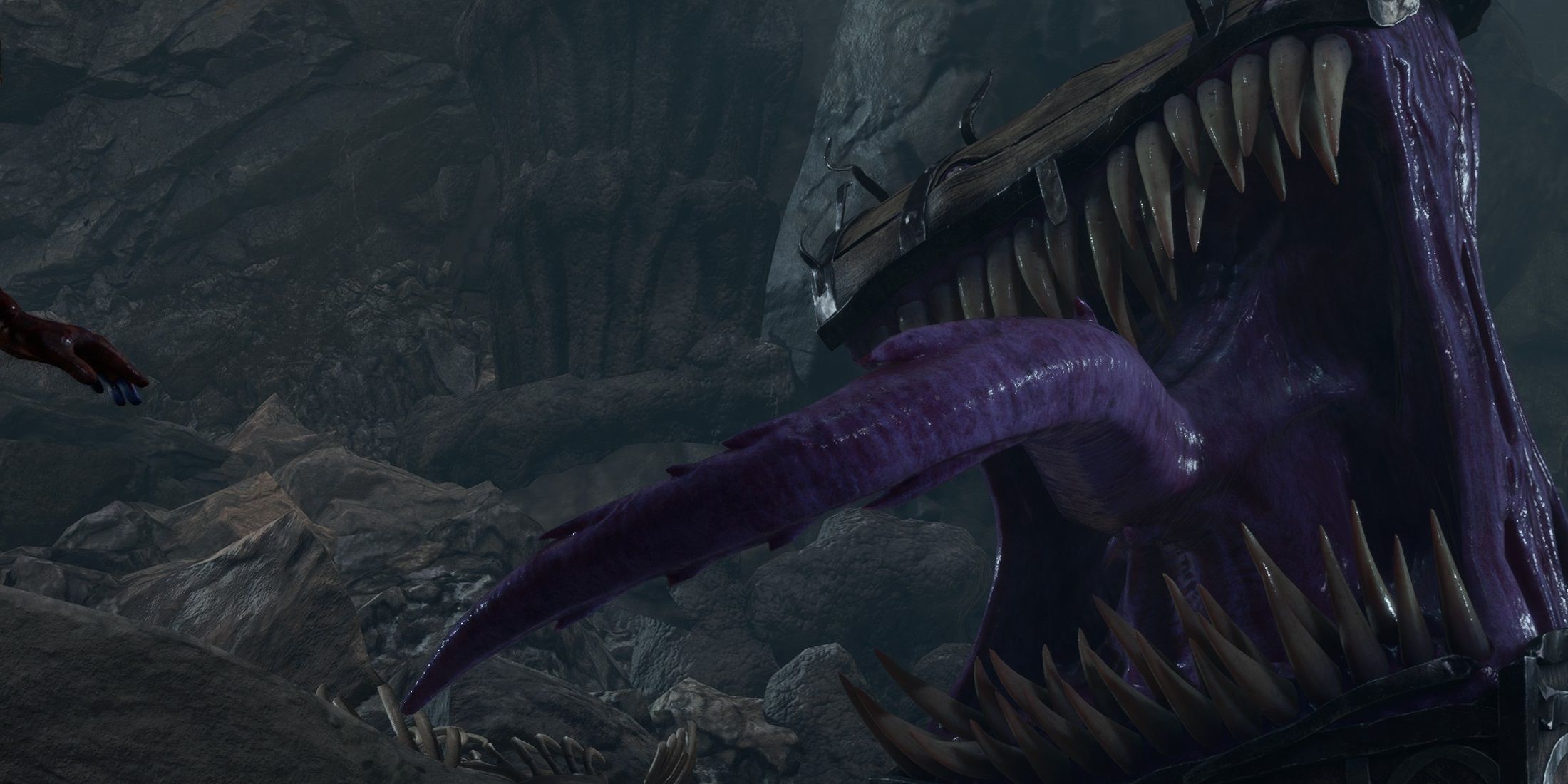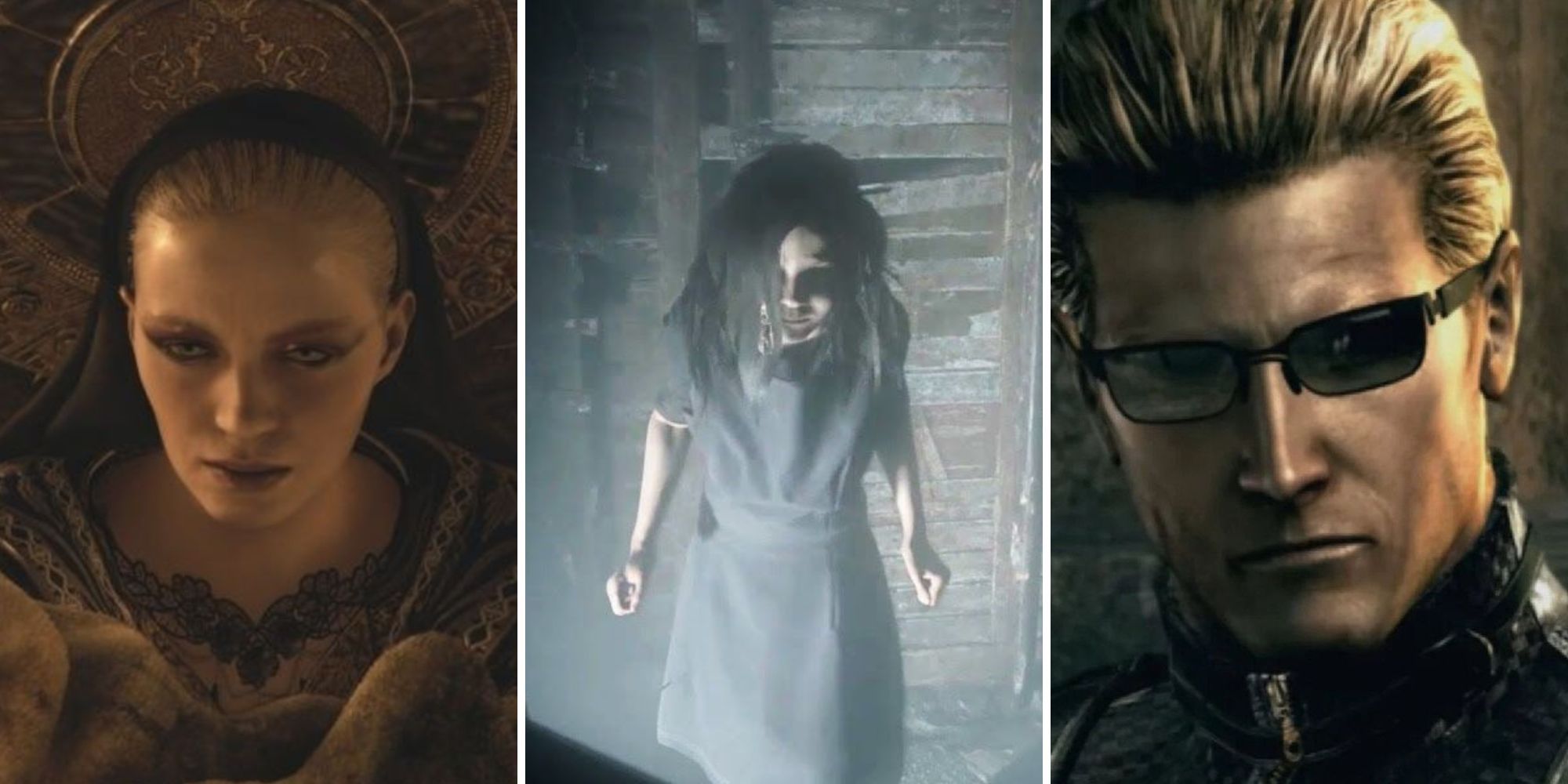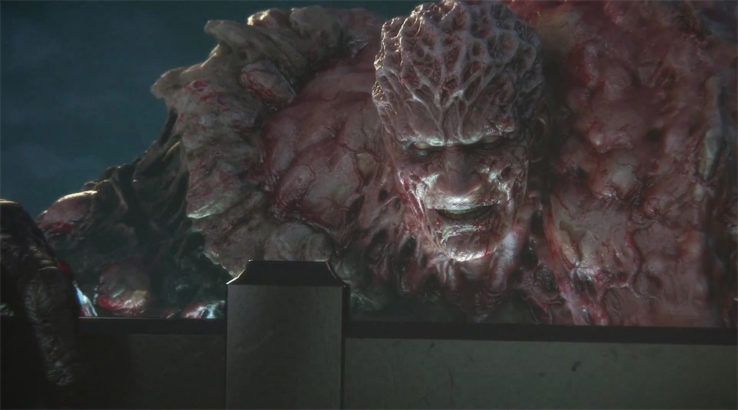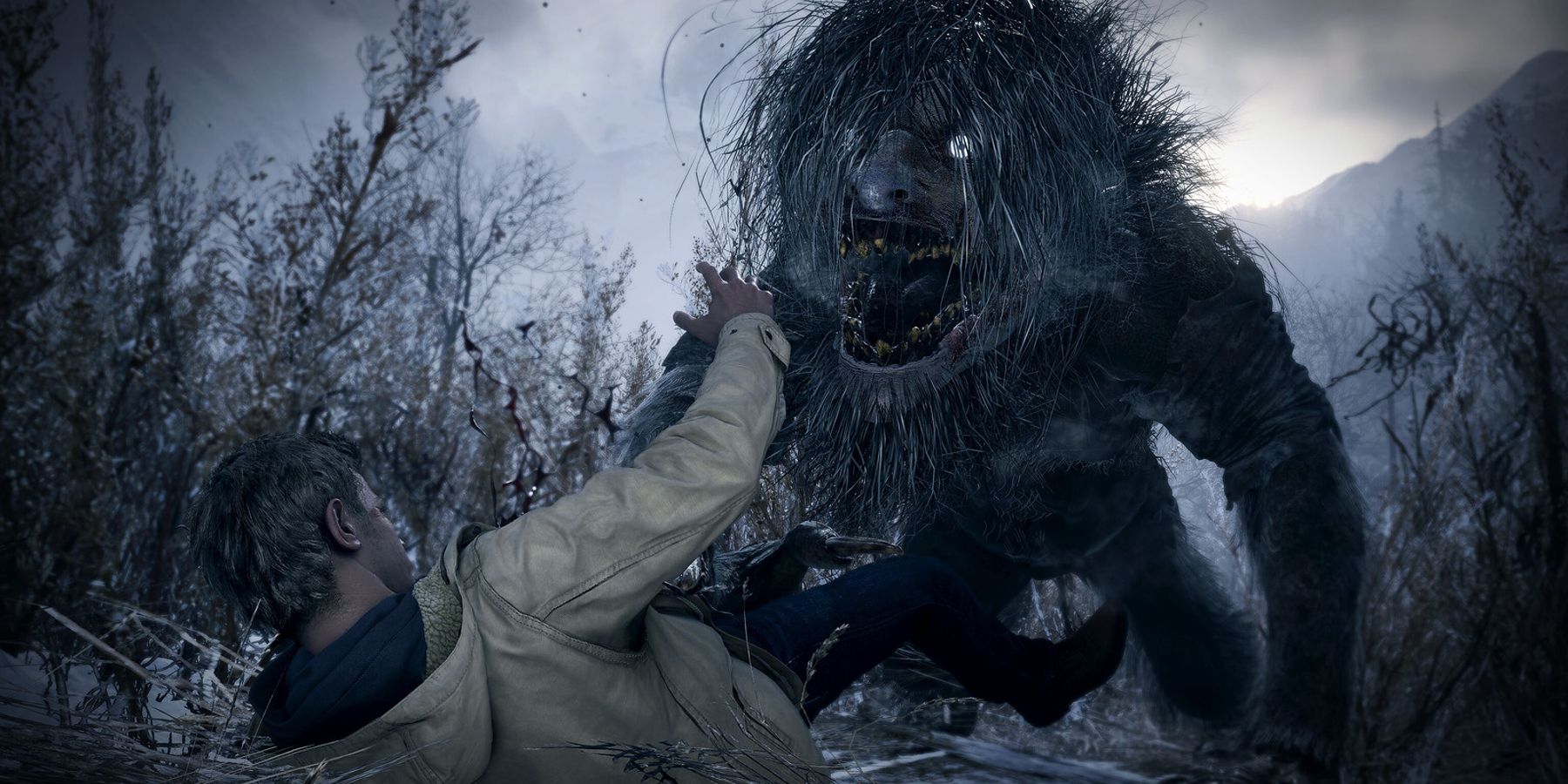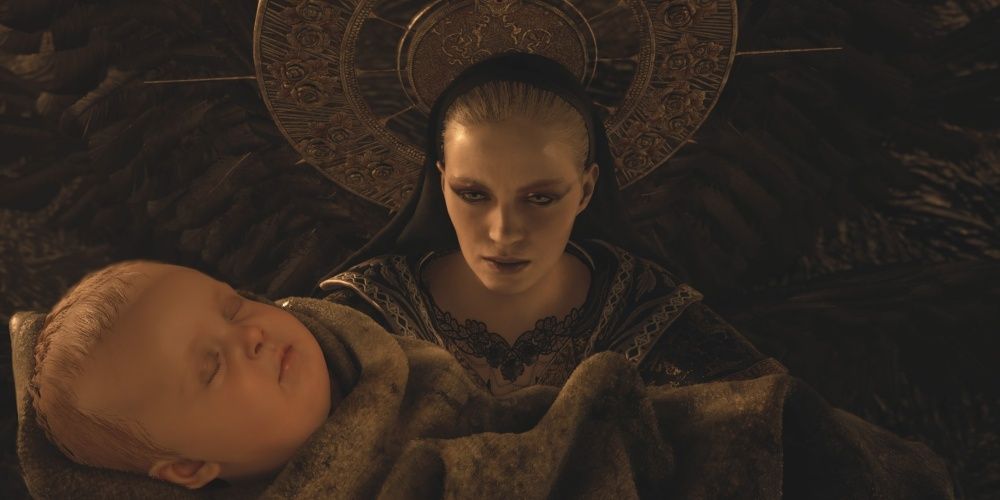Resident Evil is one of the longest-running and most successful video game series of all time. What started as a simple zombie outbreak in 1998 has become a lengthy narrative spanning nearly 118 in-game years of Resident Evil's viral and mutagenic horror. As classic entries are remastered, Capcom took the opportunity to insert minor pieces of modern lore into Resident Evil 2 and 3. With Resident Evil 4 Remake, it appears Capcom is finally ready to make the series' biggest connection: the link between the Las Plagas, the Cadou, and the T-Virus.
Those familiar with the Resident Evil series know of its convoluted narrative. Across entries on almost every gaming platform over the last 25 years, players were introduced to viruses, parasites, symbiotes, molds, and, most recently, mythological super-organisms. Due to major holes in the narrative between the T-virus, the Las Plagas, and the Cadou outbreaks, fans struggled to determine a cohesive narrative for the series. With the announcement trailer for Resident Evil 4 Remake, Capcom gave fans its first clue to possible larger connections.
Origins of The T-virus and Las Plagas in Resident Evil Games
The T-virus finds its origin with the discovery of a naturally occurring viral agent called the Progenitor, and it is the root of almost every outbreak gamers face in the Resident Evil series. Discovered by Edward Ashford, James Marcus, and Ozwell Spencer in 1966, it is the byproduct of a West African flower known as the “Stairway to the Sun”. Though it results in death for most hosts, it can reverse the rupturing of dead cells, reanimating the infected.
After realizing those raised exhibited inhuman abilities alongside mental deterioration, the men weaponized the virus as part of Spencer’s eugenics plan, The Wesker Project, which deemed only the fittest humans worthy of life. The men founded Resident Evil's Umbrella Corporation as a means to fund their research, as each performed their own experiments independently in different locations. The T-virus resulted from an experiment in which Umbrella's Marcus combined the Progenitor Virus with leech DNA, creating a weapon to eliminate those "unfit" for The Wesker Project.
Victims of the virus exhibited heightened aggression and cannibalistic tendencies, making them a perfect vehicle for spreading infection on a large scale. To eliminate those immune to the T-virus, bio-organic weapons, referred to as B.O.W.s, were created. The classic Resident Evil games, taking place in 1998, follow members of an elite task force, the S.T.A.R.S., as they come into contact with B.O.W.s in Raccoon City. In Resident Evil 4, former S.T.A.R.S. member Leon S. Kennedy sought to rescue the President's daughter in Valdelobos, a mountainous region of Spain. Valdelobos includes a village, castle, lakefront, and valley.
It is in the village that Leon first encountered Resident Evil's Las Plagas parasite. The Las Plagas differed in that it was not a Progenitor-derived virus, but a parasitic organism that hatched after direct implantation. Those infected, termed Ganados, operated similarly to a hive mind, following the orders of cult-leader Osmund Saddler, who was injected with the dominant parasite. Saddler sought to create his own B.O.W.s by combining Las Plagas DNA with human test subjects from the village. As the Las Plagas parasite continued to evolve, Saddler's efforts proved successful, giving rise to hideous and violent organisms such as the bug-like Novistadors. Following Saddler's defeat, little is known of the Las Plagas parasite or how well it was quarantined in the region.
Resident Evil Village's Cadou Parasite and Mother Miranda's Importance
In Resident Evil Village, players took on the role of Ethan Winters, the returning protagonist of Resident Evil 7, as he attempted to rescue his daughter Rose from abductors in a remote Eastern-European village. It is here that players encountered the Cadou parasite, which creates very different foes. In place of the zombie-like infected from past entries, the enemies of Village took on a more "classically" monstrous form, with the primary enemies appearing lycanthropic and exhibiting higher-order thinking.
Players learned of the origins of Resident Evil's Cadou parasite and its connection to a much bigger entity, the Megamycete. Discovered by the village's leader Mother Miranda, in 1918, the Megamycete can infect and mentally link organisms, both dead and alive. Miranda became infected with the Megamycete and decided to experiment with it, in hopes of resurrecting her daughter. She combined it with a parasitic nematode, producing more stable results, and therefore infected the region with Resident Evil 8's "Cadou Parasite".
Though the majority of those infected became lycanthropic monsters, the parasite had a uniquely powerful effect on four individuals, who became the village's Lords. In these Lords, the Cadou produced superhuman abilities as well as the capability to control some of the general infected. Though Ethan defeated Miranda and her Lords, the Megamycete and Cadou parasite lived on in his daughter, Rose. The recent Shadows of Rose DLC for Village, taking place in 2037, depicted Rose as she seeks to bond with a remnant of the Megamycete, the Black God.
How Resident Evil 4 Remake Could be Connected With Village
During the last console generation, Capcom produced remakes of both Resident Evil 2 and Resident Evil 3, giving fans a chance to experience the early entries as never before. Though both remakes sought to modernize Resident Evil characters and the games' respective narratives, they left fans with questions about how the viral outbreak depicted in Resident Evil 3 relates to the Las Plagas and Cadou parasites. With this year's Resident Evil 4 Remake, it appears Capcom may start providing some answers.
When the first trailer for Resident Evil 4 Remake debuted during Sony's June State of Play, fans were introduced to a game much darker than its predecessor. Among the various changes to the story and gameplay, eagle-eyed fans noticed a symbol that never appeared in the original: Mother Miranda's Insignia. The Insignia, a fetus within a golden circle surrounded by wings, was the symbol of Mother Miranda and her cult. It appeared on various structures and items in Resident Evil Village, the most important of which was the Winged Key that allowed access to Village's different areas. Just how this connects the viruses and parasites of past Resident Evil entries is still unclear, but fans quickly drew connections between the inclusion of Miranda's Insignia and lore revelations hidden within Resident Evil Village.
Within the narrative and collectibles of Village, players discover interesting connections between Mother Miranda and the Umbrella Corporation. During an early scene in Ethan Winter's journey, he encountered a large etching of the Umbrella logo, which supposedly belonged to ancient inhabitants of the town. The connection between Umbrella Corporation and Village is made stronger by the narrative's end, as players learn of the link between Ozwell Spencer and Mother Miranda. It is revealed the two worked together and discovered the Umbrella symbol before Spencer departed to perform his own experiments. A letter between the two can be found near the game's end, with Spencer telling Miranda of the discovery of the Progenitor Virus before his creation of the Umbrella Corporation.
How Resident Evil 4 Remake Could Become The Link Between All Infection Agents
The Umbrella-Village connection provides a good foundation for the link between Resident Evil's past and present. However, it still fails to reveal how the series' biggest virus and parasites are connected. Each agent was discovered or developed in a different place, with the T-virus resulting from independent experimentation. All three are never found in a single location, but Capcom including Mother Miranda's Insignia in Resident Evil 4's location might do just that.
Placing Mother Miranda in Resident Evil 4's Valdelobos, whether personally or by extension, means that she possesses a direct connection to the three major infection agents. Resident Evil Village's Mother Miranda discovered the Megamycete and created the Cadou Parasite, has a direct link to Ozwell Spencer and the Progenitor virus, and now has an established link to the home of the Las Plagas. Though Capcom has yet to provide clues to the specifics, gamers can use what they already know to fill in the gaps.
Resident Evil 4 and Village already share many similarities. They both take place in similar regions, marked by a village, castle, lakefront, and valley. Adding credibility to the link between locations, Valdelobos translates as "Valley of Wolves". Both display infections by parasitic organisms that operate via a hive-mind. Furthermore, both Village and Valdelobos' residents are directly infected by a cult. By connecting those cults and locations, the rich lore of both can create a single coherent narrative that traces the 1918 discovery of the Megamycete to both the T-virus and Las Plagas.
As such, Resident Evil 4 Remake is set to be a very important entry in the series' canon. With Resident Evil Village already drawing many parallels to the original Resident Evil 4, Capcom's inclusion of a direct link to its remake sets the stage for a much larger story to develop. Until Resident Evil 4 Remake releases on March 24th or Capcom releases official information about it, however, the possible link between all infection agents remains speculation.
Resident Evil 4 launches on March 24 for PC, PS4, PS5, and Xbox Series X.


